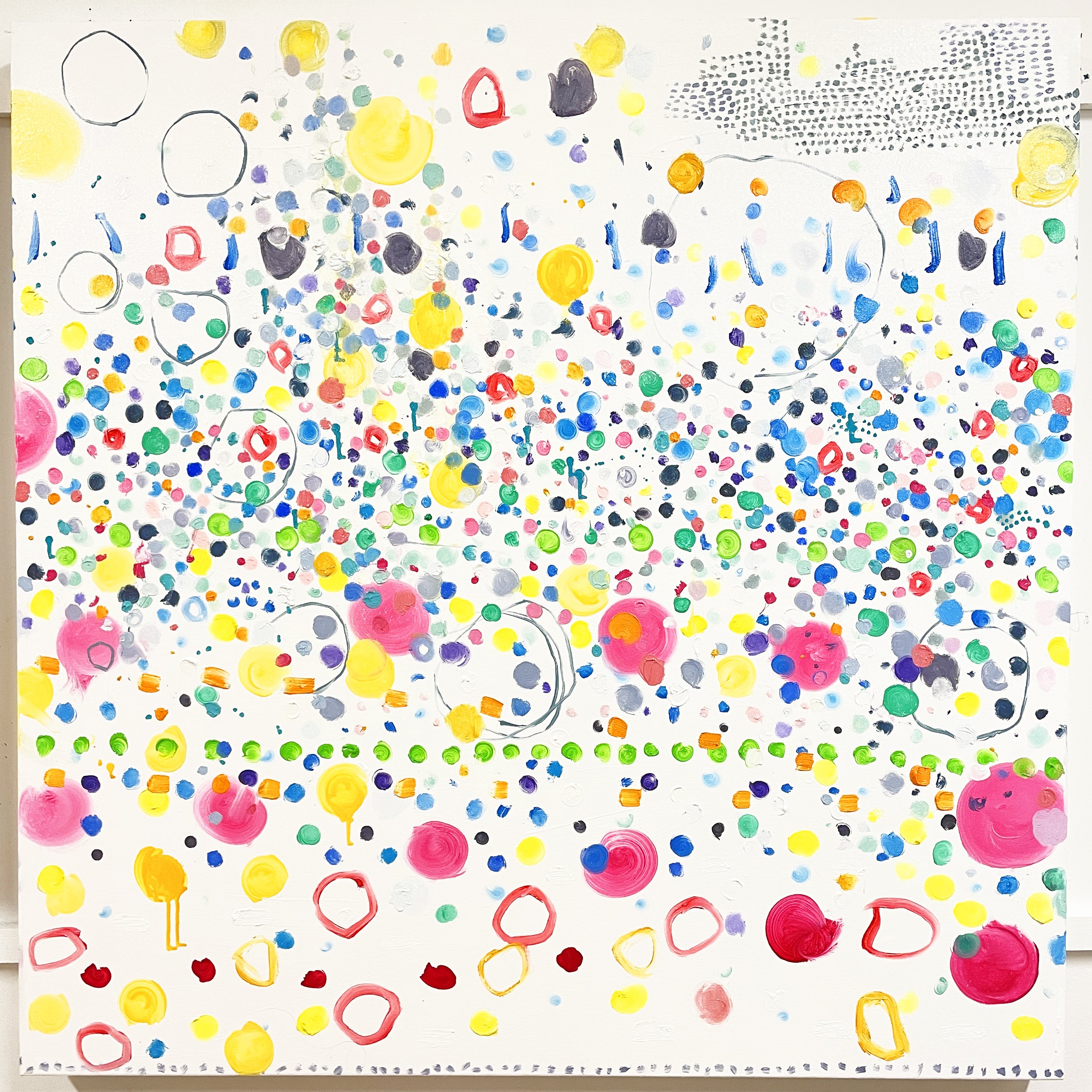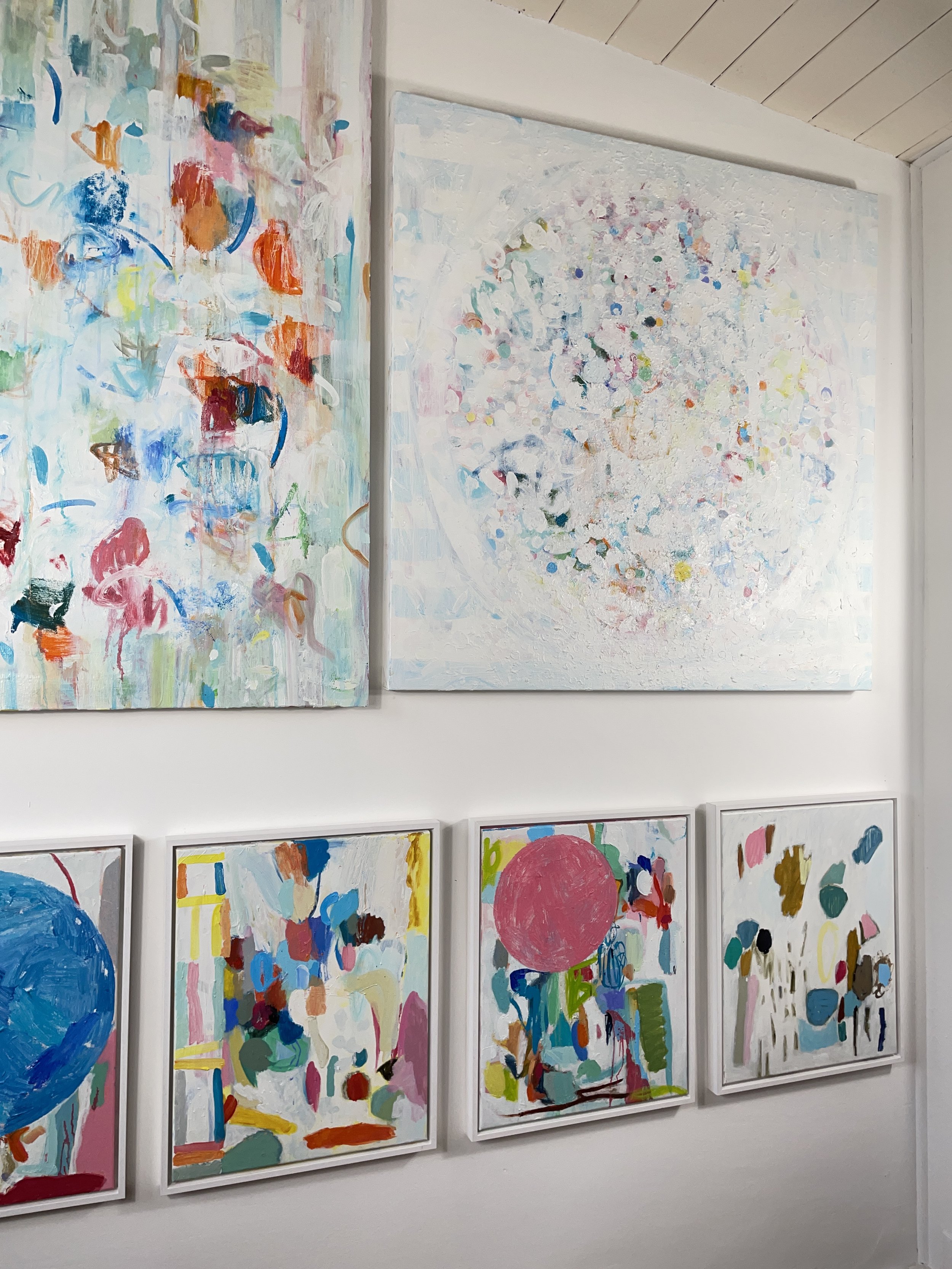The story of a painting
Monday morning and It’s quiet in the studio today, after hosting a busy and fun open studio weekend. I talked about my new collection a lot with visitors and discussed the process behind many paintings.
Circle white is probably my most minimal canvas, in that I have reduced and removed much of the colour by building up layers of white paint so that you are left with just a hint or a smudge of colour. It was an experiment for me. As some one who loves colour and isn’t afraid to really saturate a canvas, how much can I remove and will it still be interesting?
Starting a painting
Let's go back to the beginning...
In the first stages of painting I was working with bright and colourful marks (as is often my way) - my 'direction of travel' though was to limit my mark-making to just using a 'dot' shaped mark. I repeated a single dot/circle mark again and again, building the surface of the canvas. With a dense strip of marks developing, it created a sense of a horizon.
The surface became completely covered with paint, and in a way it was quite beautiful. However, it wasn't right. I needed to change it.
There comes a point sometimes in painting when little alterations here and there just aren't enough. Fiddling with and tweaking something that just isn't working is not going to make a successful painting. You have to take a radical step, but you have nothing to loose. So I decided to paint over everything I had done.
Rather than adding anything more at this stage it was time to remove…
Changing direction with a painting
So, I worked over the entire surface in white oil paint, completely covering it. I photographed it at this stage as I really enjoyed seeing the area of dots getting smaller and smaller.
Once the whole surface was covered, I rubbed back into it revealing the odd dash of colour. Picking out patches of colour...then adding fresh paint and re-introducing new colours.
Then came the circle.
A simple graphic shape that completely changed the dynamic of the picture. I was working on a few pieces by that point with the circle motif, so they played off each other in the studio while I was working out how to resolve them.
The blue stripes added a new element, but I felt they were too dominant. So I painted over them too, but just so you could still see the trace of them...you can see the echos of them in the final image.
When you look at the completed painting you start to see all the work that lies underneath. Like old scars, or marks in a landscape that have faded over time. The final image is an echo of what was there before. I love the emptiness of it and the simplicity of the circle composition. The surprise of the rich texture that you see when you get up close.
Visitors to the studio have seen all kinds of things within it - the vastness of the moon, blossom petals dispersed in the wind...
Abstract work is open to the viewers interpretation and the longer you look the more you start to really see. The other question I am always asked is 'how do you know when it's finished?'...but I'll save that for another day.
Happy looking!









